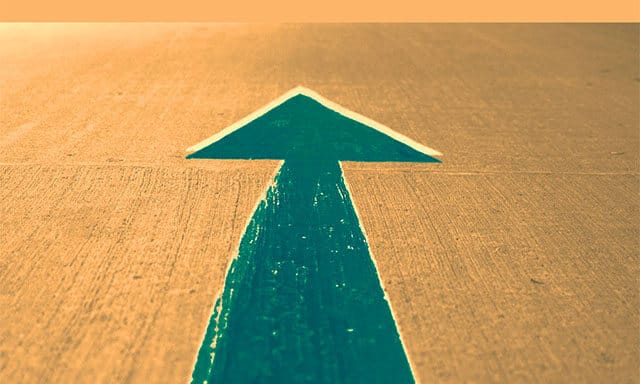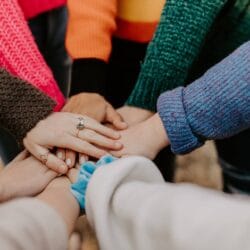Change is a word that can excite and dread people. Here we look at why…
While both collective and individual thinking can lead towards creative channels, we’ll see why the collective mindset thinking (like flashmobs) can often lead us away from creativity and positive change in ourselves in the long run.
When flashmobs first became a trending ‘thing’ over a decade or so ago, they seemed unique and interesting, enough so to garner curiosity from people wondering what on earth was going on around them in a slightly bemused way.
They absolutely brought a smile or two to people’s day who would otherwise just have the same daily routine occur without disruption. They probably annoyed a few other people too just trying to get to work whilst suddenly having singers and dancers jump in front of their path.
Either way, they made an impact.
Yet, what we didn’t see from flashmobs at the time was how this seemingly innocent and co-creative expression of art and spreading positivity was actually a precursor for the more dangerous side of collectivity that we see far and wide today.
First, though let’s see why Flashmobs don’t really work.
Why Flashmob Mentality Doesn’t Really Inspire Positive Change
Collective flashmobs often struggle to achieve long-term change and impact for several reason.
First, they can feel forced and artificial, lacking the spontaneity and genuine enthusiasm that drives meaningful change.
The collective mindset of “you’re either with us or not” can also unintentionally create divisions rather than fostering inclusivity and understanding.
Furthermore, flashmobs can become platforms for virtue signaling, where participants prioritise projecting a positive image rather than addressing individual needs and concerns.
In some cases, they may even be co-opted as corporate marketing tools, diluting their original intentions and focusing on gaining attention (for short-term marketing success) rather than driving substantial change.
There’s a difference between seeing a video on Youtube of an authentic spontaneous occurring from an individual who happens to brighten someone’s day, and a choreographed and forced display aimed at seeking attention. Both can be creative in their own way, but only the former truly resonates and inspires change and impact, as it really hits home to the individual and not a collective consensus.
Look at these two Youtube videos for comparison.
Which felt more natural?
Sure, people will feel momentarily happy in both, but they certainly won’t feel a bit ‘cheated’ for a marketing campaign in the first one afterward, and instead, that feeling of genuine trust in fellow humanity will last longer in the first example (and genuine laughter really is infectious and good for creativity).
It’s not to say the second example didn’t bring some people joy, and we can certainly benefit from co-creation too, but its main aim was clearly to garner attention towards the dancers who also were loving the attention their collective was getting (which we’ll see leads to more harm than good in the long run).
We need more times where we connect with people in a freer way like the first video. Unfortunately, in an attention-seeking economy, so much of the ‘creativity’ we see today is forced for attention (like practically every video on TikTok), and as such it doesn’t really free people into truly and freely creative endeavours (there’s usually a ‘catch’ attached that only ends up stifling true creativity from blossoming – like trying too hard to gain likes rather than letting things just flow).
The Importance Of Flow For Individual Creativity To Blossom
You see, when we get into the natural ‘flow’ of creativity, it’s not forced, it just comes. You feel it. Like when you see a musician just be so into the music they aren’t playing the notes, they are feeling it and going with it. If anyone has experienced this flow state, you’ll know what it means.
It’s a state we all should enter more each day for a moment, as this is where the true beauty of life is found. It’s where we can just be in the moment and not care about all the other pressing issues around us, where we are just living presently without fears, and where we seem to be able to ‘level up’ and take our knowledge or skills somewhere that we previously struggled when thinking too hard about it.
When we see so many videos today we don’t see people in flow states. We see people vying for attention. We also find more people watching videos of mindless entertainment rather than appreciating the true talents of those ‘in the flow’, and this is a sad occurrence that has stemmed from the need to be seen and heard as a collective rather than to embrace and respect our individual endeavour.
It’s why children grow up today wanting to be celebrities or influencers rather than wanting to really craft a talent or skill. They aren’t encouraged enough to explore individualism and instead are drawn to anything that is seen as popular whether it’s healthy or not.
When someone who stuffs their face full of junk food gets millions of views compared to others putting 10,000 plus hours into their craft then you know something has gone wrong in how we merit true creativity in this world, but it’s also why many people find it hard to adapt away from collective biases (which can really stifle the ability to problem-solve and create in their future).
Instead, people wake up and instantaneously scroll through feeds of attention-seeking content. This is living in perpetual autopilot, where our minds are led by the external and not by our own thoughts.
Effective change occurs when individuals are inspired to take action based on their own capabilities and passions. Genuine change arises from witnessing authentic expressions of talent, laughter, and individuality, rather than from a forced collective mindset.
By promoting and celebrating individual capabilities, we empower people to make a difference in their own unique ways, and we see a lot more people breaking through the challenges and hurdles that exist when on a journey towards mastering a craft, and then we see people find these blissful flow states more often.
Why Did The Likes Of Flashmobs Become So Damaging To How Society Functions Today?
Flashmobs were a precursor for a world that felt that change would work if we all came together as part of a collective movement (early green-thinking), rather than embracing the actual differences and talents of the individual.
It’s the participation badge fallacy.
It seems innocent enough at the outset, but over time this approach, which we’ve seen through countless forms over the years on social media (just think ice bucket challenges, manakin etc.), just leads to trend ‘following’, and little change is really made in an individual when they become so ingrained to follow the next thing.
It just grooms a passive (responsibility) mentality and a virtue-signaling, attention-seeking one at that, and today we see this played out further in how some people just want to protest or seek attention about anything, and be seen as being virtuous for doing so. It’s a dangerous drug and blackhole to fall into.
Flashmobs themselves were positive and fun in their original intention, we shouldn’t forget that, but the undercurrent of making people feel either ‘good or bad’ for joining in a collective movement can lead to a lack of freedom of expression that comes from more individual and original thinking.
Ultimately, the power of flashmobs (and other creative collective movements) lies in their authenticity and ability to inspire individuals.
Flashmobs originated from a desire to promote positive actions and spread awareness, but they can lose their impact when they prioritise the need to be part of a collective rather than fostering genuine well-being and self-empowerment through creativity.
It’s not to say that we don’t create when in groups, we do, but usually we develop far more ideas and original thinking when we work alone (at least at first), as this allows us to get inside our own mind and develop insights through whitespacing (and then come together to organise our findings in groups after).
However, too much ‘group think’ distracts individuals from thinking as individuals, and when we talk about being able to adapt and take responsibility for change and vision in your own life (rather than be influenced by external biases) it’s fundamentally important to be able to think independently.









